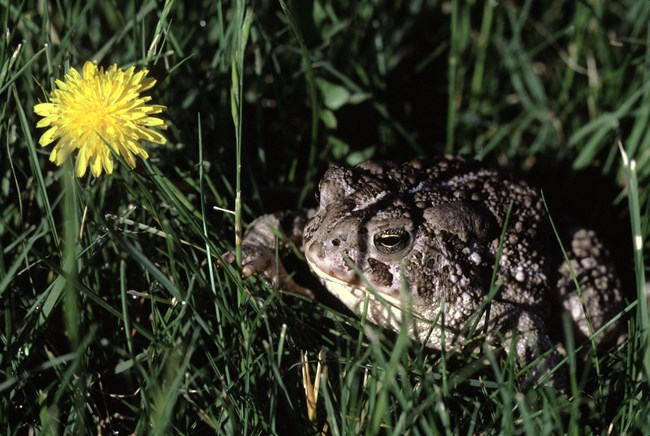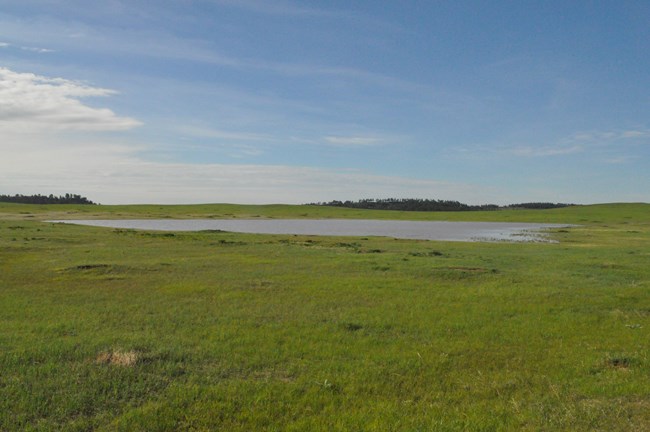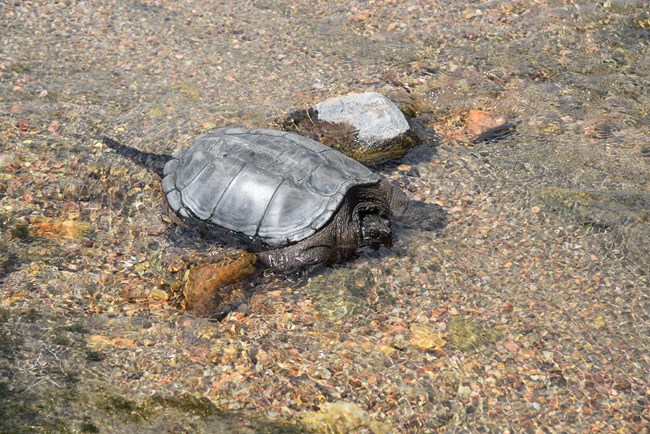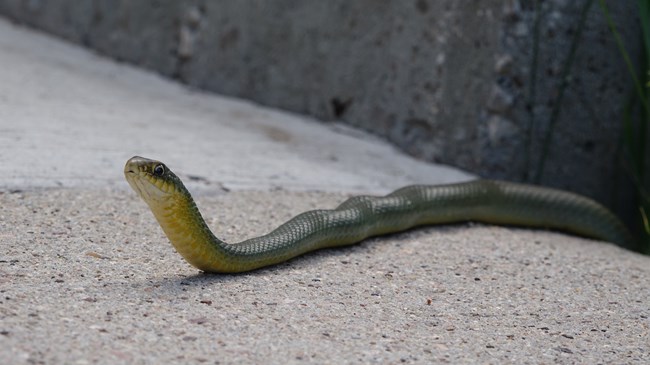
NPS Photo
The trilling song of chorus frogs. The buzz of a rattlesnake's rattle. Both reptiles and amphibians add to Wind Cave's soundscape while making up yet another important part of the ecosystem.

NPS Photo AmphibiansAll amphibians require water to complete their life cycle. They must lay their eggs in water, where their aquatic larvae will spend the first few months or years of life. However, large bodies of standing, permanent water are nonexistent in Wind Cave National Park. How can amphibians survive, then, if there’s no permanent water? The story of amphibian survival is a story of the ephemeral, or seasonal, ponds that are filled each spring. These ponds are fed by snowmelt and rain, and usually remain wet for a few weeks until midsummer. These ponds, which look like mere puddles to a passerby, are hotspots for amphibian activity. They provide the habitat and food necessary for the next generation’s survival. 
NPS Photo What can an amphibian do when it’s too cold, or too dry? Hide! Amphibians survive the harsh prairie by hiding underground, in damp, cool soil until conditions are just right. These animals can spend most of their lives underground, in dormancy, until the next spring rain reawakens them. Then, it is time to repopulate the spring prairie ponds and start the cycle again. Amphibians, though sparse, are easy to track at Wind Cave. Driving carefully at night in the spring, it is common to see toads crossing the road. You may also hear frogs and toads chirping at ponds or streams. 
NPS Photo / Timm Richardson ReptilesSeveral species of reptiles also call Wind Cave National Park home, and they, too, are survivors of a harsh climate. Unable to produce their own body heat, reptiles are forced to gather the heat from external conditions. However, because the park has an average annual temperature of just 49° F (9° C), reptiles, like amphibians, can only stay active in the park for a few months of the year. Most reptiles in the park are snake species. While two species of turtle have been spotted, the common snapping turtle and the western painted turtle, the lack of permanent water sources makes the park poorly suited for a permanent population of turtles. 
NPS Photo / Abby Rimstidt The only venomous snake found in the park is the prairie rattlesnake. While exploring, be aware of your surroundings. Rattlesnakes are often found in prairie dog towns and rocky areas. However, prairie rattlesnakes are not aggressive and will avoid conflict as long as they are given plenty of space. Although rattlesnake bites are rarely fatal, they require immediate medical attention. Snakes are an integral part of the ecosystem for their role as both predator and prey. When encountered, it can be rewarding to watch the hardy reptile in its natural environment from a safe distance as it slithers off into the prairie grass. Rattlesnake vs. Bullsnake 

Left image
Right image
Select a Park:Select a Species Category (optional):
Search results will be displayed here.
|
Last updated: January 25, 2023
